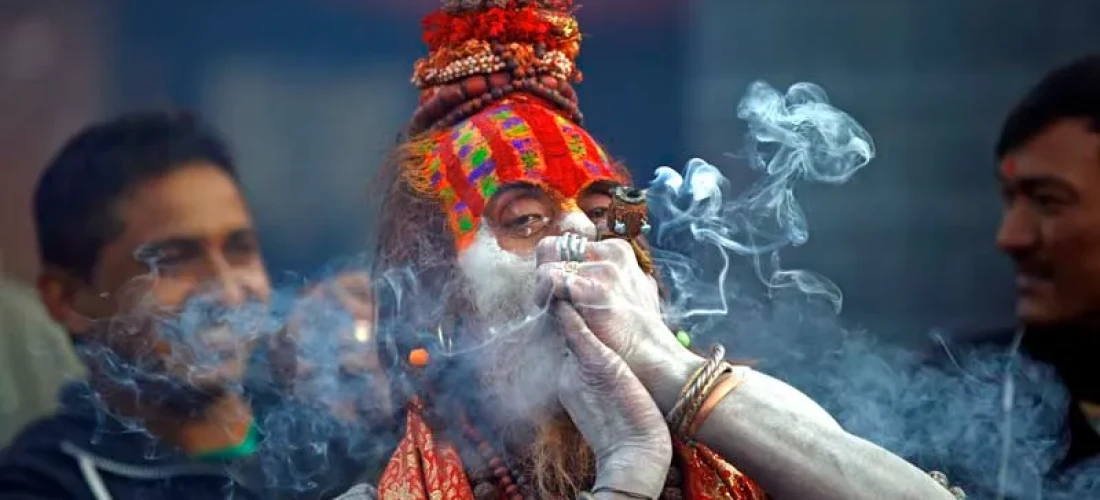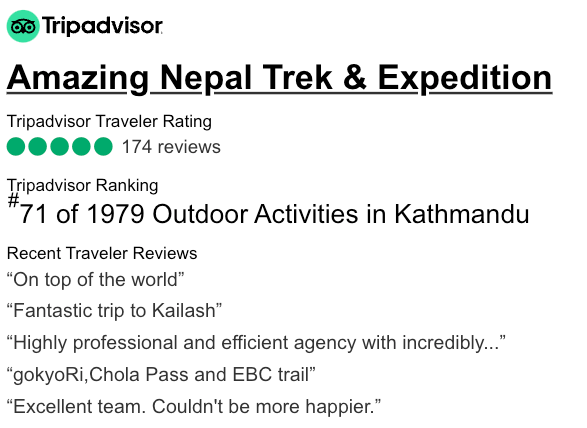Pashupatinath Temple welcomes 1.5 million devotees during
Maha Shivaratri, creating Nepal's biggest religious gathering. The festival
celebrates the "Great Night of Shiva" on the 13th or 14th night of
Phalguna, a Hindu month. Legend tells us that Lord Shiva saved the world by
drinking poison on this sacred night.
The festival blends spiritual practices with rich cultural
traditions. Devotees stay awake through the night to perform sacred rituals.
They offer milk and honey while seeking spiritual freedom through fasting and
prayer. Nepal's Army Day happens to fall on the same date, which adds military
parades and cultural shows to the festival's energy.
Let us show you the remarkable experience that awaits at
Pashupatinath Temple, a UNESCO World Heritage Site. You'll learn about the
sacred rituals and get helpful travel tips to make your visit memorable.
What
is Maha Shivaratri in Nepal
The ancient Hindu festival of Maha Shivaratri holds deep
meaning in Nepal. People celebrate it as both a spiritual occasion and a
national holiday. The festival's name means "The Great Night of
Shiva" and falls on the 14th day of the Hindu month of Magha.
Origin
and religious significance
The stories behind Maha Shivaratri are the sort of thing I
love. One sacred tale tells how Lord Shiva performed the cosmic Tandava dance
that represents the cycle of creation, preservation, and destruction. Another
story speaks of Lord Shiva's brave act of drinking the deadly halahala poison
during the ocean churning. He saved the world, and his throat turned blue. The
festival also celebrates Lord Shiva and Goddess Parvati's sacred union, which
shows the perfect balance between masculine and feminine energies.
Why
Nepal celebrates Shivaratri differently
Nepal's way of celebrating Maha Shivaratri stands out with
its unique mix of traditions and customs. The UNESCO World Heritage Site,
Pashupatinath Temple, sits at the heart of these celebrations. Thousands of
devotees and sadhus from Nepal and India head over here each year. The festival
comes at a special time when locals believe winter ends and spring begins.
Nepal's celebrations are special because they bring together
many spiritual practices. Devotees fast, stay up all night, and keep chanting
"Om Namah Shivaya" to awaken their inner consciousness. The festival
goes beyond religious boundaries and encourages unity among people of all
backgrounds who come to honor Lord Shiva.
Women in Nepal find the celebration especially meaningful.
They fast and pray for their husband's well-being or, if unmarried, ask for a
spouse with Lord Shiva's compassionate qualities. The festival has grown into a
rich cultural event that blends spirituality, community bonding, and Nepal's
unique traditional customs.
Main
Celebrations at Pashupatinath Temple
Weeks before Maha Shivaratri, Pashupatinath Temple buzzes
with activity as it reshapes the scene into a spiritual haven. The Marwadi
Committee works with temple authorities to adorn the premises with flowers
worth about 2 million rupees. Temple walls get fresh paint, broken stairs
receive repairs, and colorful electric lights brighten every corner.
Temple
preparation and decorations
Fresh paint and vibrant decorations create an enchanting
atmosphere in the main temple area. Thousands of oil lamps and flower garlands
make the temple premises sparkle. The air fills with the scent of burning ghee
and incense. The Pashupati Area Development Trust expects more than a million
devotees this year.
Key
rituals and timings
The temple's structured schedule includes these rituals
during the festival:
·
Mangala Aarti: 5:00 AM
·
Morning Abhishekam: 9:00 AM to 11:00 AM
·
Evening Aarti: 6:00 PM to 7:30 PM
The abhishekam ceremony keeps all four doors of the main
temple open. This allows devotees to see all faces of the sacred Shiva Lingam.
Devotees can request special pujas like Maha Mrityunjay Jaap and Rudrabhishek
ceremonies.
Role
of Sadhus in celebrations
Sadhus bring a mystical dimension to the celebrations. More
than 500 holy men from Nepal and India stay at various locations including
Annapurna Bhandar, Swargadwari Ashram, and Nirmala Akhada. These ascetics, with
faces covered in sacred ash, meditate deeply and bless pilgrims throughout the
festival.
Pilgrims can get free food at multiple locations, including
Hongs Mandap and Nirmal Akhada. The authorities have stationed 10,000 security
personnel and 5,000 volunteers in the Pashupati area to ensure smooth
celebrations.
How
Locals Celebrate Shivaratri
Nepalese families celebrate Maha Shivaratri with deep
devotion through unique customs their ancestors passed down. The sacred
occasion brings communities together in a vibrant celebration of faith and
spirit.
Family
traditions and customs
Married women keep strict fasts to pray for their husband's
well-being. They don't eat or drink anything throughout the day. Single women
fast too, hoping to find a spouse with Lord Shiva's virtuous qualities.
Families start their day with ritual baths and then visit nearby Shiva temples.
They offer milk, honey, and sacred bel leaves to the Shiva lingam.
Special
foods and offerings
The fast ends with families sharing special traditional
delicacies. The festival's menu has:
·
Thandai (a cooling drink made with almonds,
fennel seeds, and rose petals)
·
Bhang ladoo (sweet treats with special
ingredients)
·
Sel roti (traditional ring-shaped bread)
·
Dhido (thick porridge)
Devotees prepare fruits and sweets as offerings and later
share them as prasad with family members. These traditional foods carry deep
spiritual meaning because people believe they hold Lord Shiva's blessings.
Community
gatherings and events
The cityscape lights up with communal bonfires as night
falls. People gather around these sacred fires to chant mantras and sing
devotional songs in a spiritually charged atmosphere. The festival has a fun
side too - children create makeshift roadblocks with ropes and collect small
amounts of money from passing vehicles to buy sweets, similar to
trick-or-treating.
Communities organize cultural programs with traditional music
and dance performances through the night. These gatherings help neighbors bond
as they share the occasion's spiritual significance. Devotees stay awake until
dawn during jagran, the night-long vigil. They participate in group prayers and
share spiritual stories.
Many communities organize charitable activities beyond
religious ceremonies. Families give food and clothing to people in need,
showing the giving spirit that makes this sacred festival special. Maha
Shivaratri in Nepal beautifully combines spiritual devotion with community
fellowship.
Planning
Your Shivaratri Visit
A meaningful Maha Shivaratri experience at Pashupatinath
Temple needs good planning. We planned this guide to help you make the most of
your spiritual experience.
Best
time to arrive
The temple welcomes visitors from 4 AM to 9 PM daily. The
most peaceful time to get darshan is between 5 AM and 12 PM. You should try to
reach at dawn to avoid the afternoon rush that fills Pashupatinath. The morning
hours are a great way to get some quiet time and feel the spiritual atmosphere
before devotees pack the temple grounds.
What
to wear and bring
The temple has strict dress code rules. Your clothes must
cover shoulders and knees - the temple doesn't allow short skirts, sleeveless
tops, or shorts. Loose and comfortable clothing helps you move through crowds
and join long prayer sessions easily.
Essential items to carry:
·
Small denominations of cash to make offerings
and market purchases
·
Comfortable walking shoes (avoid sandals or
slippers)
·
Water bottle and light snacks
·
Hand sanitizer and face mask
·
Small bag to store footwear, as you can't wear
shoes in temple areas
Photography
guidelines
The temple follows specific rules about photography to keep
its sacred nature. You can use cameras in outer areas, but the main temple
strictly prohibits photography. Ask permission before taking pictures of
sadhus, as they usually expect payment. Make sure to agree on the price first
to avoid confusion.
Safety
tips
Shivaratri brings massive crowds, so you need extra safety
measures. Look for police stations and information points right after you enter
- they help during emergencies. Keep your valuables safe since pickpockets
target large gatherings. If you lose your group, find the nearest police
officer who can announce your name through speakers.
Be careful with festival food stalls as hygiene standards
differ. Drink only bottled water to stay safe. You'll see cannabis use during
the festival, but note that it's illegal in Nepal - don't buy or use any
intoxicating substances.
Where
Else to Experience Shivaratri
Nepal's Maha Shivaratri celebrations extend beyond
Pashupatinath's sacred grounds. Many more temples throughout the country host
remarkable celebrations that blend unique spiritual experiences with cultural
traditions.
Other
important temples in Kathmandu
Doleshwor Mahadev Temple in Bhaktapur connects deeply with
the legendary Kedarnath shrine in India. People believe it represents the
shrine's head. Thousands of devotees come here to seek blessings through
special offerings and pray through the night.
The magnificent Bhaleshwor Mahadev Temple sits atop
Chandragiri Hill and gives visitors stunning views of the Kathmandu Valley.
This sacred spot marks where Goddess Sati's forehead fell, making it a
cherished pilgrimage site during Shivaratri celebrations.
Gokarneswor Mahadev Temple stands by the holy Bagmati River.
Beautiful pagoda architecture and detailed wood carvings adorn this temple.
Three sacred rivers - Bagmati, Chandramati, and Suryamati - meet here, creating
a powerful spiritual energy.
Regional
celebrations across Nepal
Halesi Mahadev Cave in Khotang District stands as the
"Pashupatinath of Eastern Nepal." This cave temple holds special
meaning as both Lord Shiva and Guru Rinpoche (Padmasambhava) found shelter
here.
Devghat in Chitwan sits where the Kali Gandaki and Trishuli
rivers join. Devotees take purifying river baths before their prayers. Pilgrims
from every corner of Nepal come to this meeting point of rivers to receive
divine blessings.
Gupteshwor Cave in Pokhara creates an intimate space for
Shivaratri celebrations. Worshippers find a sacred Shiva lingam deep inside its
chambers, perfect for quiet reflection.
Regional temple celebrations feature these elements:
·
Special abhishekam ceremonies with milk and
honey
·
Night-long vigils with continuous chanting
·
Traditional fire rituals (havan)
·
Community feasts and prasad distribution
·
Cultural performances and devotional music
The Kailashnath Mahadev Statue in Sanga reaches 143 feet into
the sky. This tallest Shiva statue in the world has become a symbol of devotion
that attracts visitors from Nepal and beyond.
Jaleshwar Mahadev Temple in Mahottari district shows a unique
sight. The temple stays submerged between two large ponds - Barunsar and
Kshiresar. This unusual setting adds mystery to Shivaratri celebrations.
Small community temples across Nepal blend local traditions
with classical rituals. These celebrations bring together people of all
backgrounds. They help preserve ancient customs and spiritual practices that
have shaped Nepal's religious identity for generations.
Conclusion
Maha Shivaratri is one of Nepal's most important spiritual
celebrations that beautifully combines ancient traditions with community
spirit. The celebration extends beyond Pashupatinath Temple to many sacred
sites across Nepal. Each location provides its own unique spiritual connection.
The festival brings people together through shared
traditions. People fast with their families and gather around sacred fires.
Devotees from different walks of life come together to pray and celebrate.
These time-honored customs pass from one generation to the next and create
bonds that last forever.
Your visit during this special time needs good planning, but
the spiritual benefits make it worth the effort. The devotional atmosphere and
local people's warmth create memories that stay with you forever. Nepal's rich
cultural heritage and spiritual traditions shine through Maha Shivaratri. This
makes it a perfect destination for anyone seeking spiritual growth or cultural
understanding.
FAQs
Q1.
What are the main rituals performed during Maha Shivaratri in Nepal?
The main rituals include offering bilva leaves, fruits, and
flowers to Lord Shiva, lighting lamps and incense sticks, and chanting mantras
like "Om Namah Shivaya" throughout the night. Devotees also
participate in all-night vigils, perform sacred rituals with milk and honey
offerings, and observe fasting.
Q2. What should visitors wear when
attending Maha Shivaratri celebrations at temples? Visitors should wear
respectful attire that covers shoulders and knees. Loose, comfortable clothing
is recommended for navigating crowded spaces and participating in lengthy
prayer sessions. Short skirts, sleeveless tops, and shorts are not allowed in
temple areas.
Q3.
Are there any dietary restrictions during Maha Shivaratri?
Many devotees observe
fasting during Maha Shivaratri. Those who fast typically avoid wheat, rice,
salt, certain vegetables, and pulses. Non-vegetarian foods, onion, and garlic
are strictly avoided, even by those not fasting. Some people opt for a
fruit-based diet or consume only one meal during the day.
Q4.
Where are the best places to experience Maha Shivaratri celebrations in Nepal?
While Pashupatinath Temple in Kathmandu is the main center
for celebrations, other significant locations include Doleshwor Mahadev Temple
in Bhaktapur, Bhaleshwor Mahadev Temple on Chandragiri Hill, and Gokarneswor
Mahadev Temple. Regional celebrations at Halesi Mahadev Cave in Khotang
District and Devghat in Chitwan also offer unique spiritual experiences.
Q5. What safety precautions should
visitors take during Maha Shivaratri celebrations? Visitors should be
cautious of pickpockets in large crowds, keep valuables secure, and stay
hydrated with bottled water. It's advisable to arrive early to avoid
overwhelming afternoon crowds. Identifying police stations and information
points for emergencies is recommended. Visitors should also exercise caution
with festival food stalls and avoid purchasing or consuming any intoxicating
substances, as cannabis use remains illegal in Nepal.








